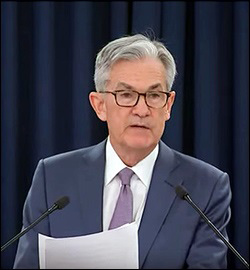by Pam Martens and Russ Martens
Wall Street on Parade

If you are an individual and you want to buy stocks on margin at a brokerage firm in the U.S., under Federal Reserve Board Regulation T the brokerage firm can lend you a maximum of 50 percent of the total initial purchase price. Not all stocks are eligible for margin. There are also maintenance margin requirements imposed by the industry, stock exchanges and the brokerage house itself if the stock value drops after the initial purchase, which could trigger a margin call and subject you to having to deposit more cash or securities under penalty of having your account liquidated at a loss.)
Regulation T grew out of the stock market crash of 1929 and ensuing economic collapse known as the Great Depression. The crash was correctly blamed on the lack of regulation of Wall Street firms which were allowing customers to borrow as much as 90 percent in their stock margin accounts. Following three years of stock market hearings before the Senate Banking Committee of that era, which revealed an unprecedented level of corruption and self-dealing on Wall Street, Congress enacted sweeping legislation. In addition to the Glass-Steagall Act (Banking Act of 1933) which banned Wall Street’s stock trading and underwriting houses from owning deposit-taking banks, the Securities Exchange Act of 1934 (15 U.S.C. 78) gave authority to the Federal Reserve Board to set margin policy and required the following at that time:

